The content of the article
How to grow bell pepper? Science is not complicated. It will take only a lot of time, patience and a little effort. You can’t just take the seeds and plant them in the ground. Bell pepper has a very long vegetative period. Therefore, he simply does not have time to ripen.
In general, those who plant pepper in their area for several years know all the subtleties and nuances. We will list the most basic ones. So that beginners in agriculture could enjoy their crops without errors and losses.
What is important for bell pepper? Yes, a lot of things. Key questions always concern:
- seed picker
- preparation of soil for seedlings and planting in the ground
- growing seedlings
- landing dates
- care and nutrition
Each item on the list matters. Do let it just look impressive. In fact, no effort will be required at any stage. It is much more important to strictly follow the recommendations and you will be happy and whole baskets of sweet pepper.
What seeds of bell pepper to choose
The most important thing in this business is the shelf life of the seeds. Do not believe the manufacturers who write on bags about double or triple terms. No matter what the superpacking is, the shelf life of seeds of bell pepper is only 12 months. With further storage, germination drops sharply. Therefore, buy only fresh ones.
Another important factor is the maturity. There are varieties with a vegetative period of up to 150 days. Something and for the New Year holidays you will not wait for the harvest. Choose ultra-mature varieties. They will appear in all their glory after 70-80 days.
Tip. Do not be afraid to try different varieties and experiment. Perhaps you will collect a whole collection of your favorite bell peppers.
How to set the stage for sweet pepper
For seedlings. Yes, bell pepper is grown through seedlings. To do this, you must first prepare the ground. You can independently make a mixture of loose earth, sand and humus. Proportions 2 to 1 to 1. Either purchase special soil in the store.
In any case, it needs to be processed. First, the soil is exposed to frost. After 3 days, they are brought into heat, allowed to thaw. Then they are laid out in wide metal containers that will freely enter the oven. The earth is thoroughly shed with a strong solution of potassium permanganate, then calcined in the oven at 110-120 ° C until completely dry.
Thus, it is possible to get rid of almost all larvae of pests and pathogenic microorganisms. Which, by the way, can calmly sit in the store soil.
For landing in the ground. Land is being prepared in the fall. Organic or mineral fertilizers are added for digging. It can be rotted manure, ripened compost, fat humus. Of the minerals, potassium sulfate, superphosphate is recommended.
In the spring, 5 days before the proposed planting, the soil is cultivated for the prevention of late blight. Copper preparations (vitriol, Bordeaux mixture) or phytosporin are suitable for this.
How to grow seedlings of sweet pepper
So, the ground has been prepared. What will be the next steps? The correct routine is as follows:
- The seeds of bell pepper are soaked for 20 minutes in a warm, strong solution of potassium permanganate. Then washed with clean water. This will disinfect them.
- Then the seeds are soaked for 12 hours in a solution of a biostimulant. If it is not at hand, then just in warm water. Just add a small piece of aloe leaf cut along.
- After this procedure, the seeds are not washed.They are laid out on a damp cloth or toilet paper, covered with glass and a bag. And put in a warm dark place. About a day, seeds with normal germination should hatch. Now they are ready for sowing.
Sowing is very simple. Prepared containers are filled with soil to a height of 3-4 cm. The surface is leveled and slightly crushed. The seeds that are stuck are carefully laid out, then sprinkled on top with a layer of earth 1-1.5 cm thick. Moisten a little, put again in darkness and warmth.
After 6-7 days, a maximum of bell pepper together emerges. From this moment he needs good lighting from 7 am to 9 pm, the temperature is not lower than + 22 ° C. As you have noticed, pepper is very fond of warmth. It should even be watered only with warm water.
Sweet pepper does not like picking. He generally does not like to be disturbed. Touch, transplant, break off. But some measures are necessary. For example, a pick must be carried out necessarily. Otherwise, the roots will become tangled during the growth process, and the plants themselves will be long, thin and weak. They do it when two real sheets are clearly visible. Cotyledons do not count.
Paprika is planted in cups in two pieces at a time. And they try not to turn over until the transplantation into the open ground.
Watch the soil carefully. It should always be moderately moist, but not wet. If necessary, periodically spray the seedlings from the spray gun. This water is quite enough for irrigation. Nutrient mixtures are also consumed by leaves. The root system of sweet pepper is still too weak, but the leaves are quite capable of absorbing the right amount of nutrition.
Sweet pepper seedlings must be gradually tempered. Otherwise, it will be painful and weak. To do this, gradually reduce the air temperature to 15-16 ° C. This can be achieved by taking the sprouts out for a while on the balcony or in the unheated terrace.
Tip. If you have a greenhouse or a hotbed, you can put glasses there for a day. The nights in April are still cold, so bring seedlings into the house.
When to plant bell pepper
The exact timing of planting is always of interest to both beginners and experienced gardeners. Calculating the time of the first sowing is not at all difficult. The age of sweet pepper bushes when planting in open ground should be 76-79 days. In most regions, pepper is planted after the threat of freezing frost. This time falls on the third decade of May. Count back and get the day you need to sow the seeds.
If planting in a greenhouse is planned, then usually this happens in mid-April. Accordingly, the terms are moved back. Some owners are not able to sow sweet pepper seeds so early. Therefore, they do this in the usual time, but plants dive right away into the greenhouse or greenhouse.
By the way, the classic planting pattern of bell pepper is 40 by 40 cm.
Tip. There is a sign in the people. If any seedlings are planted on a certain day, then supposedly no subsequent frosts will harm her. This day is May 13th. The weather may still be cool, but this should not stop you. Try on a few bushes. According to reviews, the secret works at 100%.
How to care for bell peppers
Standard sweet pepper planting care includes:
- Weeding. Weeds strive to obscure the peppers and take away the lion's share of nutrients from them. Therefore, they are ruthlessly pulled out. You can stack them right in the aisles, as mulch. Let benefit instead of harm.
- Loosening. The crust is necessarily broken after each watering or rain. This contributes to better moisture retention in the soil. Only this must be done very carefully so as not to damage the root system. She has a very capricious pepper and is located close to the surface.
- Watering. Bell pepper is very responsive to timely watering.Without water, it can grow, but it will be stuck, painful and will not produce a crop. At the same time, with excessive soil moisture, the roots can begin to rot. Therefore, water it only with the threat of drought. In a normal climate, it is watered when the topsoil is dry at a depth of at least 10 cm.
- Formation. Most often, sweet peppers are allowed to grow in two stems. That is, pinch the top of the central stem. After that, pepper gives a few stepsons. Of these, the two most powerful are left, the rest are cut off. And some do not form bushes at all. And they also get good crops.
- Top dressing. Sweet peppers begin to feed organics only with the beginning of flowering. Up to this point, it is advisable to use mineral fertilizers. If you swap them, you get powerful lush bushes, and there will be few flowers. It is very good to use green liquid fertilizer or bird droppings diluted with water in the proportions of 1 to 20. One application in 15 days is enough. Fertilize preferably under the root.
- Mulching. A very important aspect of pepper care. Allows you to save moisture in the soil, which means that the need for frequent watering is gone. And does not allow weed grass to grow, and this facilitates all care in the complex. For best results, the mulch layer should be at least 10 cm. Otherwise, the whole point of the undertaking is reduced to zero.
- Getting rid of pests. As a rule, many pests are very fond of pepper bushes. And the infusion of garlic helps little from them. Insecticides are much more effective. But, if the landlord is categorically against the use of chemistry, then the network is full of folk recipes. Perhaps there is the most suitable. Among them, the best reviews received tobacco infusions (the average handful per liter of boiling water, strain, dilute in 5 liters of pure water) and a mixture based on birch tar (dilute a tablespoon in 10 liters of water).
- Disease Prevention. Ailments of sweet pepper are often caused by a lack of any elements or their overabundance. Therefore, you need to periodically carefully inspect the bushes for various suspicious spots or dots. In any case, diseases are easier to prevent than to try to get rid of them later. There are recommendations to alternate spraying with a solution of hydrogen peroxide with a solution of ammonia. Both liquids take 2 tbsp. l on 10 l of pure water.
As you can see from the list, caring for bell peppers is not at all difficult. However, it is regular.
A few tricks
- Now in pharmacies do not sell potassium permanganate. And it is required for several periods of work with bell pepper. Feel free to stomp behind her in any store that sells fertilizers and top dressing. There is not even a recipe needed.
- Try to plant different varieties of sweet pepper away from each other, because they are prone to over-pollination. And even more so, you can’t place them next to hot pepper.
- When picking or transplanting peppers, they always try to minimize damage to the earthen lump with the root system. So plants get sick less and take root better.
- It is generally accepted that young plants of sweet pepper cannot be buried. This is a mistake. Numerous experiments by gardeners have proven that extra roots develop on buried peppers. Therefore, you can safely plant the peppers by dropping them to the cotyledon leaves.
- For better pollination of flowers, sweet water is used. For 300 ml of pure water take 1 tbsp. l sugar, carefully stir and sprinkle future ovaries. Bees are happy to fly to such flowers.
How to grow bell pepper? After reading this article, you can safely answer this question - very simple!
Video: 10 mistakes when growing sweet pepper


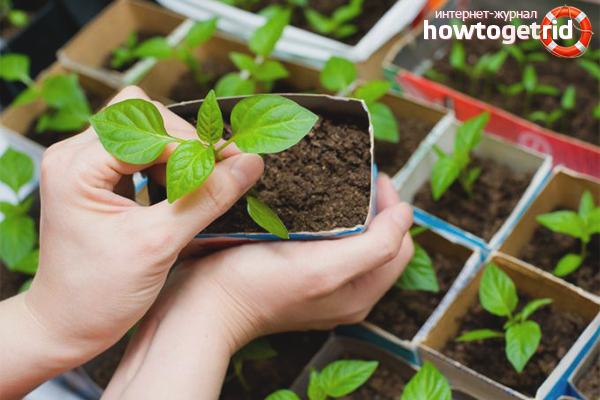
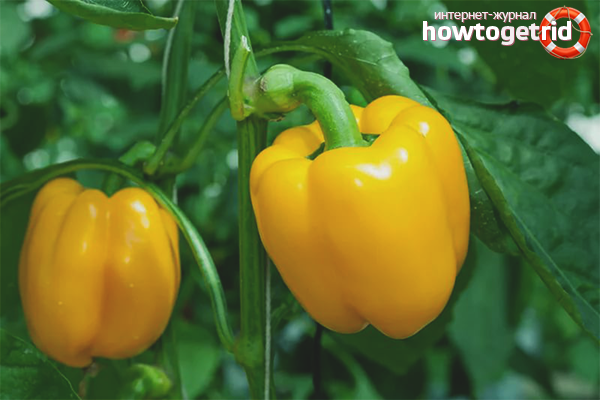
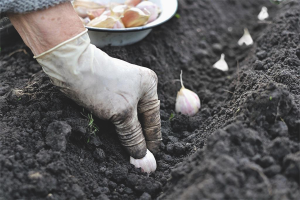
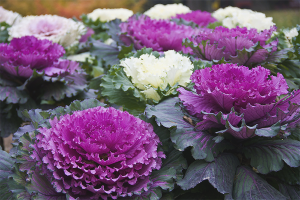

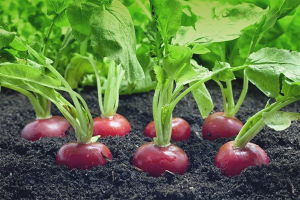
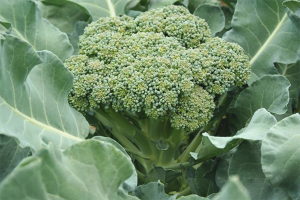
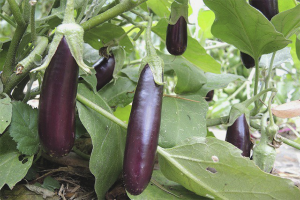

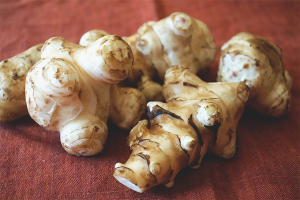
Submit